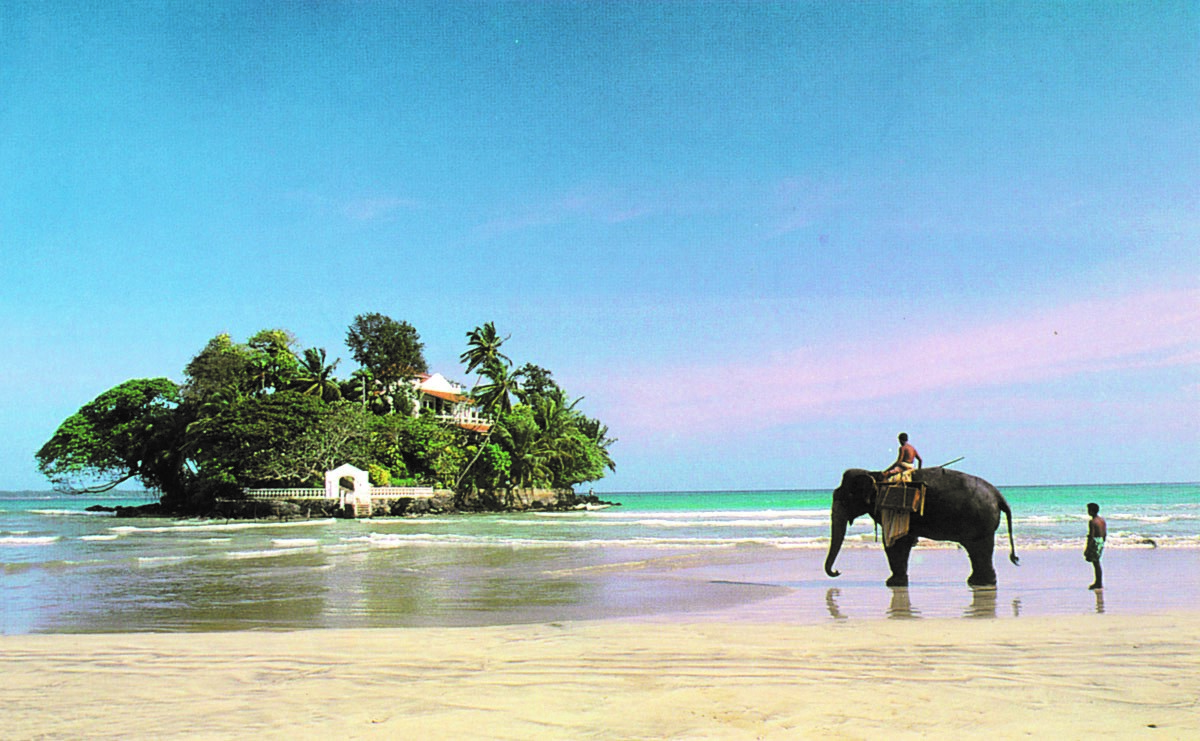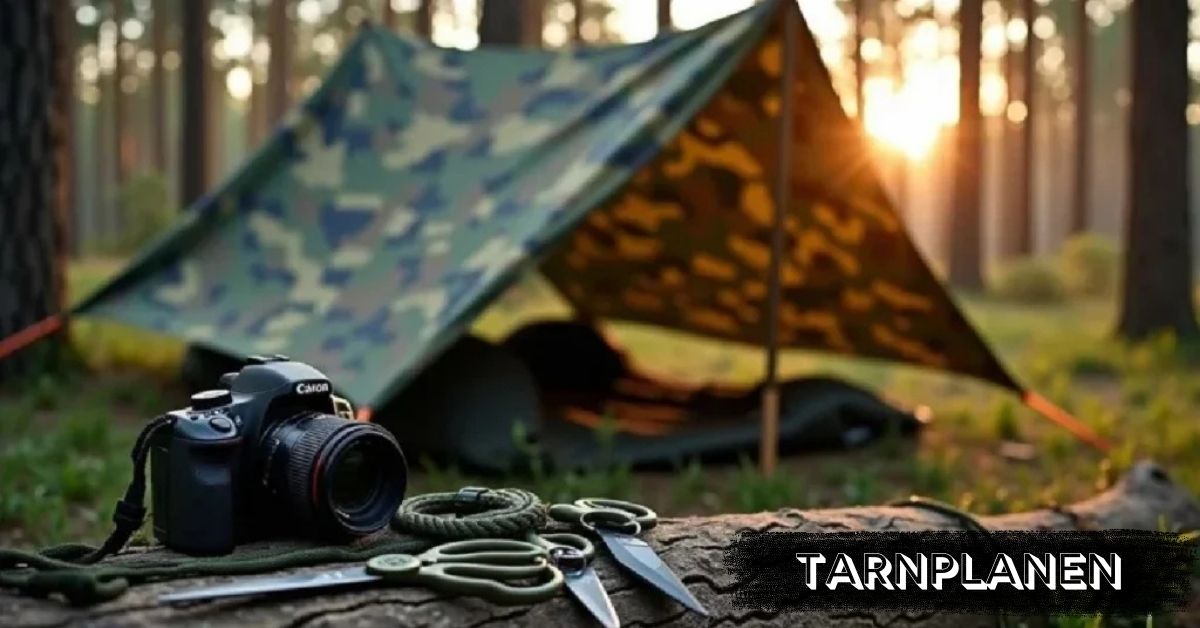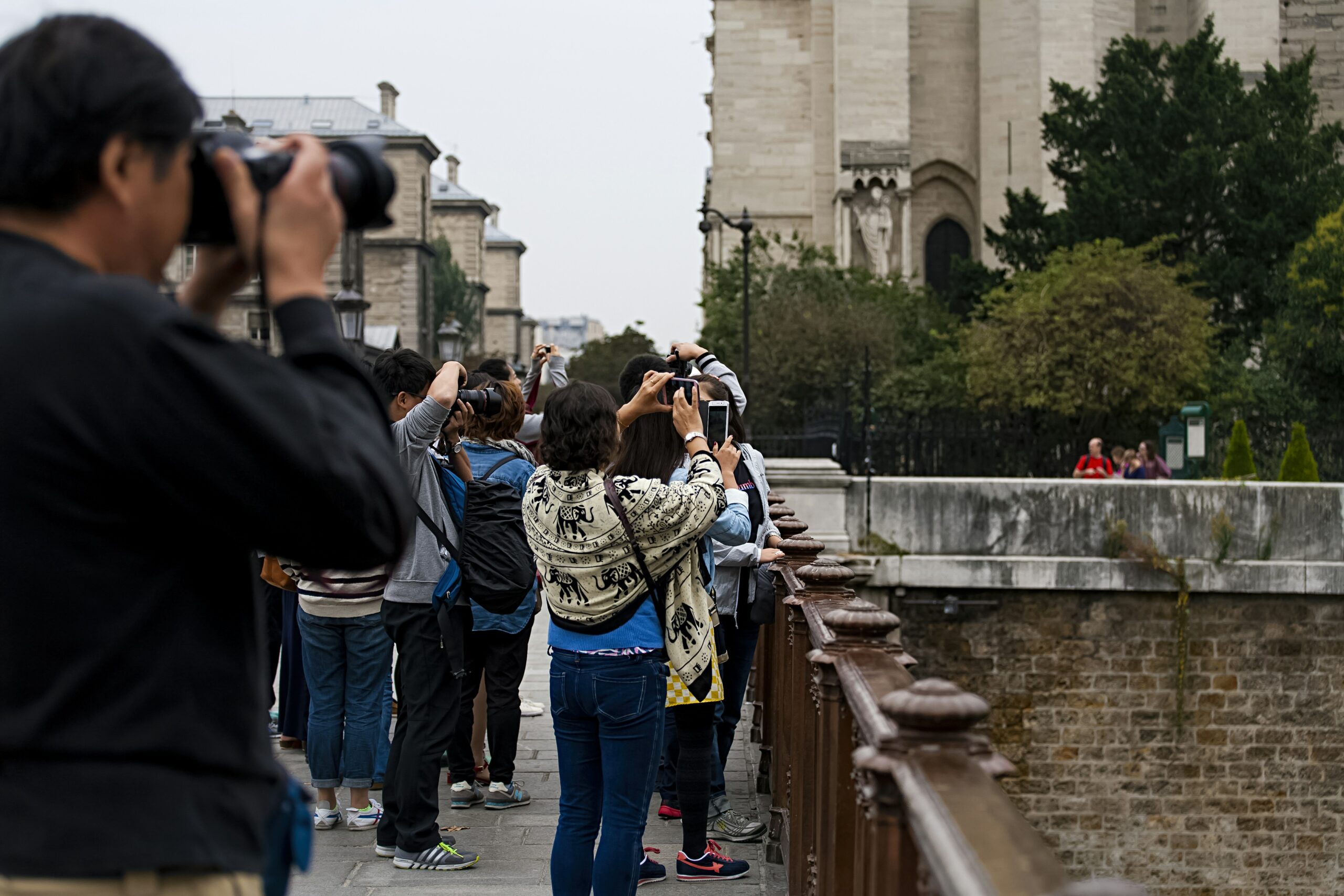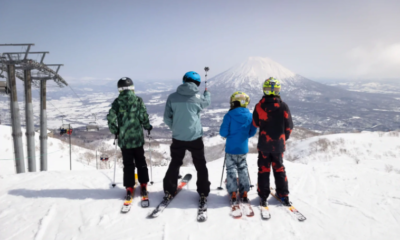Travel
Top 8 Thrilling Adventures You Must Try in Sri Lanka

Sri Lanka is a small land with big green mountains, deep blue oceans, and wild forests. What makes this special is its diverse mix of landscapes in the form of rugged mountains, misty hills, plunging waterfalls, surf & dive sites, and heart-racing activities for every thrill-seeker. Hence, its appeal lies in just how much it has to offer on such a small territory. So, if you are looking for an adrenaline-rush spot to make your vacation exciting, look no further than Sri Lanka. This land is packed with bucket-list encounters that are sure to make your Sri Lanka holidays memorable. So, pack your bags and get ready to dive into the action by trying out the following adventures.
Fun and Thrilling Things to Do in Sri Lanka for Adventure Lovers
As Sri Lanka has mountains and beaches, you can do many fun adventures here. So, unleash your inner daredevil by trying these thrilling experiences on your travel list.
1. White Water Rafting
For rafting, Kitulgala is the best place in Sri Lanka. If you are residing in Colombo, it will take 2 – 3 hours to reach there. This spot offers a wide range of rafting options for beginners and experienced ones. As every adventure promises thrill, it also demands some safety precautions to take. Before you get on the raft, wear a life jacket, helmet, and listen carefully to the briefings. Moreover, you must choose a reputable rafting operator with certified guides and well-maintained equipment. Last but not least, always check the weather conditions before going for rafting. Rafting is much better in dry weather than in overcast conditions.
2. Paragliding
Paragliding is like flying like a bird but with a parachute. It is a unique experience in which the wind helps you float in the sky and observe the scenic aerial views. You can either get its taste in Kandy or Badarawela and appreciate the beauty of Sri Lanka in a unique way. Although the flight feels magical, safety should always be a top concern. If any one of you plans paragliding, make sure to fly with a certified instructor. Moreover, do not forget to check the weather conditions before travelling to confirm if the air is suitable for this thrill. Most importantly, listen carefully to the pre-flight tips and safety measures to take during the flight.
3. Surfing
If you are fond of riding big waves, head to Arugam Bay. The beach is sunny, sandy, and full of friendly people. Located on the Eastern coast, it is known as Sri Lanka’s surf hotspot. It attracts experienced surfers from around the world because it is famous for its world-class point breaks. So, whether you are a pro or just starting out with surfing, this coastline offers waves for everyone to ride through. But you cannot just jump onto the surfing board; you need to learn to surf at a certified school. It can be risky to plunge into the water without knowing about the rip currents and swimming.
4. Wildlife Safari
If you are an animal lover, then Yala National Park is the place for your wildlife safari adventure. All you need to do is to jump in a jeep and see elephants, leopards, birds, bears and more in their natural habitat. Most of the jeeps have a Sri Lanka flag to give visitors a holistic Sri Lankan vibe. It feels like a real jungle movie and proves to be an unforgettable trip for adventure lovers and nature admirers. If you are planning a wildlife safari, you will need to book your ride with a trusted operator well before the time. You must be careful and not feed the animals because that can be risky. It is better to keep a safe distance from them. However, you can take your camera along to take some candid photos.
5. Mountain Biking
Bike riding is yet another fun thing to do on Sri Lanka’s mountain ranges. You can ride through the hills and see waterfalls, trees, and animals. This offers a great way to get off the beaten path and immerse in the raw beauty of Sri Lanka. It is a bumpy ride, but with a few safety tips, you can make it more fun. All you will have to do is to use a quality mountain bike that is suitable for off-road rides. Next, you will need to wear a helmet and safety gear to avoid any injury during the trip. Pack your handbag with water, snacks, and a first-aid kit to be on the safer side. Lastly, as mountain biking can be thrilling, do not go alone; instead, take an experienced guide with you who knows the trails.
6. Scuba Diving
Scuba diving lets you breathe and swim under the sea. It is like visiting a secret underwater world. You can get to explore the wonders of Sri Lanka’s coral reefs and diverse marine life. If you are looking for a more authentic experience, then head to Pigeon Island, which is called a heaven on earth for colourful coral reefs, fish, and sharks. However, no matter how experienced a scuba diver you are, you must dive or snorkel with a certified operator. Moreover, avoid touching or disturbing the marine life and coral reefs. It is always wise to use a reef-safe sunscreen, as it protects the delicate ecosystem. Lastly, research marine conditions before going in the water, as water currents can affect your thrill.
7. Hiking and Trekking
Horton Plains National Park is a UNESCO World Heritage Site and is well known for hiking and trekking. It is a big park in the hills where you can walk on trails and see deer, birds, and big cliffs. One of its cliffs is called “World’s End”, an iconic viewpoint where it feels like you are walking in the sky. The park is also home to unique flower and bird species. As you hike through this park, you will need to wear hiking shoes and relaxed clothes that suit the weather conditions. Trekking or hiking is an energy-draining activity, so you must keep yourself hydrated and eat snacks on the way when you feel low. The whole trail is marked with cautions, so stick to those points and be aware of wildlife. Before you go, do not forget to check the weather forecast because the conditions change rapidly in the highlands.
8. Kayaking
Kayaking is like paddling a little boat in calm and peaceful waters. If you are fond of water spots, then this is for you. Reach Bolgoda Lake, which is the largest natural lake in Sri Lanka, and get to experience a relaxed yet adventurous experience. It is a peaceful escape into nature and gives you a chance to explore the serenity of peaceful water. But as you ready yourself for the water adventure, do not forget your life jacket. Moreover, know the weather conditions, and if there is an onset of storm, avoid kayaking, as it can disturb the balance of the boat.
Wrap Up
Considering its beaches, rocks, and mountains, Sri Lanka is the best place for fun and adventure. Tourists can surf in the ocean, climb rocks, and see wildlife in the jeep. Whether you are a water lover, mountain climber, or nature admirer, Sri Lanka always has something exciting for you. You will not only make happy memories here but also see new things and maybe get to try something for the first time. So, contact a travel agency like Virikson Holidays and get amazing Sri Lanka holiday deals for an exciting trip.
Travel
Tarnplanen: The Complete Guide to Durable Tarpaulins

Tarnplanen, also known as tarpaulins, are versatile covers designed to protect goods, equipment, and outdoor spaces from environmental factors. They are widely used in construction, agriculture, transport, and even in daily household activities. Made from materials such as polyethylene, PVC, or canvas, these sheets offer excellent protection against rain, sun, dust, and wind. Over the years, tarnplanen have become an essential tool for individuals and industries alike, offering cost-effective and reliable solutions for covering and securing items.
The Origin and Evolution of Tarnplanen
The concept of protective covers dates back centuries when people used animal hides and woven fabrics to safeguard their belongings. With the advancement of synthetic materials in the 20th century, tarpaulins evolved into durable and weather-resistant sheets. Today’s tarnplanen combine modern technology, reinforced edges, and UV-resistant coatings, making them far more advanced than their early counterparts. This evolution has transformed them from simple covers to specialized tools for industries and personal use.
Materials Used in Tarnplanen
The quality and performance of a tarpaulin largely depend on its material. Polyethylene tarpaulins are lightweight, waterproof, and affordable, making them perfect for general use. PVC tarpaulins are heavier, stronger, and often used in industrial and transport settings due to their durability. Canvas tarpaulins, while traditional, remain popular because they are breathable and ideal for covering equipment that requires air circulation. Each material type has its strengths, and choosing the right one depends on the intended purpose.
Common Sizes and Thickness
Tarnplanen are available in a wide range of sizes and thickness levels. Smaller sheets may be used for domestic purposes like covering furniture, while larger ones are essential for construction sites and trucks. Thickness is often measured in grams per square meter (gsm), with heavier tarps offering better durability and resistance to harsh conditions. A 90 gsm tarp might suffice for lightweight use, while heavy-duty 200 gsm or higher versions are designed for industrial-grade applications.
Waterproofing and Weather Resistance
One of the biggest advantages of tarnplanen is their ability to withstand different weather conditions. Waterproof coatings and sealed seams ensure that rainwater does not penetrate the material. UV protection prevents the fabric from degrading under prolonged sunlight exposure. Additionally, tarnplanen are designed to resist mold and mildew, which is crucial for long-term use in damp environments. This level of weather resistance makes them indispensable in outdoor projects.
Industrial Uses of Tarnplanen
Industries rely heavily on tarnplanen for multiple applications. In construction, they serve as temporary roofs, protect building materials, and cover scaffolding. In logistics, trucks use heavy-duty tarpaulins to shield goods during transportation. Agriculture benefits from them as crop covers, greenhouse linings, or protection for stored hay. Even in mining and marine industries, specialized tarpaulins provide durable solutions to protect equipment and raw materials.
Household Applications of Tarnplanen
Beyond industrial purposes, tarnplanen are highly practical in everyday life. Homeowners use them to cover outdoor furniture, protect cars, or provide shade in gardens. They are also helpful during renovations to safeguard floors and furniture from dust and paint. Campers and outdoor enthusiasts rely on them as ground covers, makeshift shelters, or rain protection while traveling. Their versatility makes them a must-have item in every household.
Tarnplanen for Emergency Situations
During natural disasters like floods, hurricanes, or earthquakes, tarnplanen become lifesaving tools. They are used as temporary shelters, roof replacements, or to protect supplies from getting wet. Relief organizations stockpile tarpaulins to distribute quickly in affected areas. Their portability and ease of setup make them ideal for emergency response, providing immediate relief when permanent solutions are not available.
Tarnplanen in Transport and Logistics
The transport industry uses heavy-duty tarpaulins extensively to protect goods during transit. Trucks, trailers, and cargo ships often rely on these covers to ensure products remain intact against weather and dust. In many regions, laws require cargo to be secured with proper covers to avoid accidents. Tarnplanen, with their reinforced grommets and ropes, ensure that loads are tightly secured, reducing risks during long hauls.
Maintenance and Care for Tarnplanen
Like any tool, tarnplanen last longer when properly maintained. Regular cleaning with mild soap and water prevents dirt buildup and mold growth. It is important to store them in dry, shaded areas when not in use. Avoiding sharp objects and handling them carefully also prolongs their lifespan. With the right care, even a frequently used tarpaulin can last for several years.
Cost and Affordability
Tarnplanen are known for being cost-effective solutions. Their affordability makes them accessible to both individuals and large businesses. While higher-quality tarps may come at a greater initial cost, their durability ensures long-term savings by reducing replacement frequency. This balance of price and performance is one of the reasons tarnplanen are popular across industries.
Eco-Friendly Tarnplanen Options
With growing environmental awareness, manufacturers now offer eco-friendly tarpaulins made from recyclable and biodegradable materials. These alternatives reduce environmental impact without compromising on quality. Some eco-friendly versions are designed with reduced chemical coatings and sustainable production processes. Choosing such options helps consumers and industries align with sustainable practices.
How to Choose the Right Tarnplanen
Selecting the right tarpaulin depends on purpose, size, and durability needs. For household use, lightweight polyethylene versions are sufficient, while industrial users may require heavy-duty PVC sheets. Factors like UV resistance, waterproofing, and reinforced edges should also influence the decision. Understanding specific requirements ensures maximum efficiency and long-term satisfaction with the product.
Tarnplanen in Outdoor Events
Event organizers often use tarpaulins for stages, temporary seating areas, and equipment protection. Festivals, exhibitions, and sports events rely on them to create makeshift shelters and shade areas. Their quick installation and adaptability make them ideal for short-term outdoor events. Tarnplanen ensure that weather conditions do not disrupt activities, keeping events running smoothly.
Advantages of Using Tarnplanen
The key benefits of tarnplanen include versatility, durability, affordability, and ease of use. They are lightweight yet strong, easy to transport, and quick to set up. Their wide range of applications—from household tasks to industrial uses—makes them invaluable. Above all, they offer reliable protection against weather and environmental factors, making them one of the most practical investments available.
Challenges and Limitations
Despite their many advantages, tarnplanen are not without limitations. Lightweight versions may tear easily if exposed to sharp edges or strong winds. Prolonged exposure to harsh sunlight can weaken lower-quality tarps. Additionally, improper installation may cause water pooling, which can damage the material over time. Recognizing these limitations helps users make better purchasing decisions.
Innovations in Tarnplanen Technology
Modern technology has introduced advanced features in tarpaulin manufacturing. Flame-retardant coatings, anti-fungal treatments, and heat-sealed seams are now common in premium versions. Smart tarpaulins embedded with sensors are even being tested for logistics to monitor temperature and humidity levels. These innovations promise to enhance performance and expand the role of tarnplanen in future industries.
Conclusion
Tarnplanen have proven themselves as reliable, versatile, and essential tools across multiple industries and households. From protecting goods in transit to offering shelter in emergencies, their importance cannot be overstated. With proper selection, care, and maintenance, they can serve as long-lasting solutions for a wide range of needs. As technology advances, the future of tarnplanen looks even more promising, blending practicality with innovation.
FAQs
- What is the most durable material for tarnplanen?
PVC tarpaulins are considered the most durable due to their thickness, strength, and resistance to harsh weather conditions. - Can tarnplanen be recycled?
Yes, many modern tarnplanen are recyclable, and eco-friendly versions are made with sustainable materials to reduce environmental impact. - How long does a tarpaulin usually last?
With proper care, a high-quality tarpaulin can last several years, depending on usage and exposure to environmental factors. - Are tarnplanen suitable for camping?
Absolutely. They are often used as ground covers, rain shelters, and protective layers for camping gear. - What size tarpaulin should I buy?
The size depends on your intended use. For small household tasks, compact tarps work well, while industrial or transport needs require larger, heavy-duty versions.
Travel
Veneajelu: Discover the Joy of a Relaxing Boat Ride

The Finnish word veneajelu translates to “boat ride” in English. In Finland and other countries with strong connections to water, a veneajelu is more than just a ride—it’s an experience of relaxation, freedom, and nature. Whether on a lake, river, or coastal waters, taking a boat ride provides an escape from daily life and a chance to connect with the natural world.
The Meaning Behind Veneajelu
At its core, veneajelu is about enjoying time on the water, usually in a simple and leisurely manner. Unlike fishing trips or professional sailing, it emphasizes relaxation, sightseeing, and spending quality time with friends or family.
Cultural Importance of Veneajelu in Finland
In Finland, where lakes are abundant and summers are short yet beautiful, veneajelu is a cherished tradition. Families often take evening boat rides during summer holidays, enjoying the midnight sun, calm waters, and peaceful landscapes.
Why People Love Boat Rides
People are drawn to veneajelu because it combines tranquility with adventure. The gentle rocking of the boat, the fresh air, and the open water create a unique sense of freedom. It’s a reminder of how simple pleasures can bring immense joy.
Types of Boats Used in Veneajelu
Veneajelu can be enjoyed with various types of boats: small wooden rowboats, motorboats, sailboats, or even canoes. The choice depends on personal preference, location, and the kind of experience one is seeking.
Veneajelu as a Family Activity
Boat rides are often family-friendly, allowing children and adults to spend time together outdoors. Parents introduce their kids to nature, teaching them respect for water and safety while creating lasting memories.
Romantic Veneajelu Experiences
For couples, a veneajelu can be an intimate and romantic outing. A sunset ride on a calm lake or a moonlit journey along the coast creates the perfect atmosphere for meaningful moments.
Adventure and Exploration
While many see veneajelu as peaceful, it can also be adventurous. Exploring hidden islands, secluded beaches, or riverside villages gives a sense of discovery and excitement.
Health Benefits of Boat Rides
Spending time on the water reduces stress, improves mood, and encourages mindfulness. The physical activity of rowing or sailing can also provide light exercise, making veneajelu good for both the body and mind.
Seasonal Appeal of Veneajelu
Summer is the most popular season for veneajelu in Finland, with long days and warm weather. However, autumn boat rides bring beautiful foliage, while spring rides celebrate the awakening of nature. Winter, on the other hand, freezes lakes, making boat rides impossible but building anticipation for summer.
Safety Tips for Veneajelu
Safety is a key part of any boat ride. Wearing life jackets, checking the weather forecast, and avoiding overcrowding are simple measures that ensure a pleasant experience. Responsible boating helps prevent accidents and protects everyone on board.
Veneajelu in Tourism
Tourists visiting Finland or other lake-rich regions often look forward to a veneajelu experience. Many resorts, hotels, and cabins offer boat rentals, guided tours, or traditional rowboat rides, making it accessible to visitors.
Eco-Friendly Veneajelu
With growing environmental awareness, eco-friendly boating is becoming important. Using electric boats, minimizing fuel use, and respecting wildlife habitats help preserve natural waterways for future generations.
Memories and Traditions
For many Finns, veneajelu brings back childhood memories of family holidays, fishing trips, and summer nights on the water. It is not just an activity but a tradition that strengthens family bonds and cultural identity.
Conclusion
Veneajelu is more than just a boat ride—it is an experience that blends relaxation, culture, and nature. Whether enjoyed with family, friends, or alone, it offers peace, adventure, and a deep connection to the water. Its cultural roots and timeless appeal make it a cherished part of life, especially in Finland, where lakes and waterways define the landscape.
FAQs
- What does veneajelu mean?
Veneajelu is the Finnish word for “boat ride.” - Where is veneajelu most common?
It is most common in Finland and other regions with many lakes and rivers. - Can tourists enjoy veneajelu?
Yes, many tourist destinations in Finland offer boat rentals or guided rides. - What boats are used for venea’jelu?
Rowboats, motorboats, sailboats, and canoes are all common choices. - Is veneajelu safe for children?
Yes, it is safe when proper precautions like life jackets are used.
Travel
How to Avoid Tourist Crowds in Photos at Popular Places in Rome

Rome, Italy, is a dream destination for many travelers. The city is home to some of the most iconic landmarks in the world, such as the Colosseum, the Roman Forum, and the Vatican. While these sites are undeniably stunning, they can also be overcrowded, especially during peak tourist seasons. As a Rome Italy photographer, capturing the beauty of the Eternal City without the hustle and bustle of large crowds can be challenging. However, with a few expert techniques and the right planning, it is entirely possible to take stunning, crowd-free photos at some of Rome’s most popular locations.
In this guide, we’ll share insider tips on how to avoid tourist crowds and photograph Rome’s most famous landmarks in all their glory. Whether you’re a seasoned photographer or an enthusiastic traveler with a camera, these strategies will help you capture Rome in its most serene form.
Timing is Everything
The key to avoiding crowds in Rome is timing. Popular tourist sites tend to be packed during certain hours of the day, especially around midday when most tourists arrive. To avoid these crowds and ensure the best possible lighting for your photos, you’ll need to plan your visit around the optimal times.
Early Morning Magic
One of the most effective ways to get a crowd-free shot is by getting up early. The early hours of the morning, right after sunrise, are the best time to capture iconic locations like the Colosseum, Trevi Fountain, and the Spanish Steps.
Why early mornings?
- The light is softer and more flattering, which makes for better photographs.
- Tourist crowds are sparse, allowing you to take clean shots without distractions.
- The air is cooler, and the city is quieter, giving you a more peaceful experience.
Arriving at these sites right when they open, or even a little before, will give you an exclusive opportunity to capture these locations at their best.
Golden Hour
Golden hour—the period just after sunrise or before sunset—offers some of the most beautiful natural light for photography. The light is warm and diffused, and it creates a magical atmosphere that makes for stunning photos. During golden hour, many of Rome’s most famous landmarks, such as the Pantheon and St. Peter’s Basilica, are bathed in beautiful light.
To make the most of golden hour:
- Research sunrise and sunset times in advance.
- Be ready to shoot about 30 minutes before and after the official sunrise or sunset time.
- Choose your location carefully to ensure the best angle for the light.
By planning your shoots during golden hour, you’ll avoid the harsh midday sunlight while also avoiding the crowds that usually appear later in the day.
Night Photography
While the morning may be the best time for some places, nighttime can also offer a unique opportunity to photograph Rome’s landmarks without large crowds. At night, many tourist attractions are illuminated, creating a different ambiance than what you would find during the day.
Places like the Trevi Fountain or the Colosseum are beautifully lit after dark, providing dramatic and atmospheric photos. Furthermore, these sites tend to be much quieter at night, giving you the space to capture long exposure shots without the interference of tourists.
Choosing the Right Location
In addition to timing, choosing the right spots for your photos can help you avoid large crowds. Many of Rome’s landmarks are extremely popular, so planning your itinerary wisely can make a significant difference in your ability to capture photos without distractions.
Lesser-Known Gems
While the Colosseum and the Vatican are obvious choices for photography, they can also be the most crowded. Fortunately, Rome is full of hidden gems that are just as beautiful but tend to attract fewer visitors. Consider exploring off-the-beaten-path locations such as:
- Villa Borghese Gardens: A peaceful park offering scenic views of Rome with fewer tourists.
- Gianicolo Hill (Janiculum Hill): For breathtaking panoramic views of the city, away from the usual crowds.
- Aventine Hill: A charming neighborhood with less foot traffic and beautiful views of the city, including the iconic keyhole view of St. Peter’s Basilica.
These lesser-known locations provide a more tranquil setting and can still offer spectacular photo opportunities.
Unique Angles and Perspectives
Instead of taking the traditional shot from the main entrance of a landmark, consider shooting from a different angle. For example:
- Capture the Colosseum from the rear, where fewer tourists gather.
- Photograph the Trevi Fountain from a side angle, which often results in more artistic shots.
- Use narrow alleyways and side streets to frame landmarks from a unique perspective.
By thinking creatively and exploring unconventional angles, you can capture images that stand out and avoid the typical tourist-filled shots.
Using the Right Gear
Having the right gear can help you make the most of your time and avoid distractions during a photo shoot. While it’s possible to take great photos with a smartphone, professional photographers often prefer using DSLR or mirrorless cameras for greater flexibility and image quality.
Essential Equipment for Crowd-Free Photography
- Wide-angle lens: A wide lens is perfect for capturing large landmarks or scenic views without the need to step back into crowded areas.
- Tripod: Especially useful for capturing long exposure shots during golden hour or at night.
- Remote shutter release: A useful tool for avoiding camera shake when photographing without a tripod.
By bringing the right equipment, you can quickly set up your shots and ensure high-quality images without the need to linger in crowded areas.
Working with a Professional Photographer
Sometimes, it’s worth hiring a professional photographer to help you capture the perfect shot in Rome. A professional photographer, such as “Mike Kire,” has extensive experience in dealing with crowded locations and knows the best times, angles, and techniques to avoid tourists in the frame.
A professional can:
- Help you plan your shoot efficiently, ensuring you visit the most photogenic sites during the least crowded times.
- Offer creative insights into framing and composition.
- Take the pressure off you so you can enjoy the experience and focus on capturing memories, rather than stressing about the crowds.
Practical Tips for Avoiding Crowds in Rome Photos
To further help you, here are some practical tips for avoiding crowds during your photography sessions in Rome:
- Research Opening Hours: Many sites open early or close late, offering times when crowds are fewer.
- Avoid Major Holidays: Roman holidays like Christmas, Easter, and Ferragosto bring in thousands of tourists, so plan your visit around these times.
- Use Local Knowledge: Ask locals for tips on hidden gems and less crowded times to visit popular spots.
- Plan Your Day Strategically: Start with less popular spots early in the morning, then visit crowded places later in the day when tourist traffic has subsided.
- Go Off-Season: Visiting Rome during the shoulder seasons—spring or autumn—often means fewer tourists.
Rome is undoubtedly one of the most photographed cities in the world, and with the right approach, it’s possible to capture its beauty without the crowds. By planning your shoots around the best times of day, choosing off-the-beaten-path locations, and thinking creatively about your compositions, you can create stunning images that showcase the timeless beauty of Rome.
Whether you’re a professional photographer or simply an avid traveler with a passion for photography, these strategies will help you capture Rome at its finest. And if you ever need expert assistance, a professional photographer like Mike Kire can guide you in making the most of your photography adventure in the Eternal City.
With these tips in mind, you’ll be able to avoid the tourist crowds and capture the essence of Rome in all its glory, ensuring that your photos are as timeless as the city itself.
-

 Sports10 months ago
Sports10 months agoThe Ultimate Guide to Ski and Snowboard Equipment, Ski Equipment Rental, and Snowboard Equipment Rental
-

 General1 year ago
General1 year agoStart-094: Unlocking Its Secrets and Understanding Its Power
-

 Entertainment1 year ago
Entertainment1 year agoHulu Error Code Rununk13: A Complete Guide
-

 General10 months ago
General10 months agoWindstream Email: Features, Setup, and Troubleshooting
-

 Entertainment11 months ago
Entertainment11 months agoSoaper.tv: A Comprehensive Guide to Your Streaming Companion
-

 Technology1 year ago
Technology1 year agoWhy SBCodez is the Go-To Resource for Aspiring Coders
-

 Games11 months ago
Games11 months agoPizza Edition Games: The Ultimate Guide to Fun and Flavor
-

 Uncategorized10 months ago
Uncategorized10 months agoOceanofPDF: Free eBooks Source or Copyright Violation?
